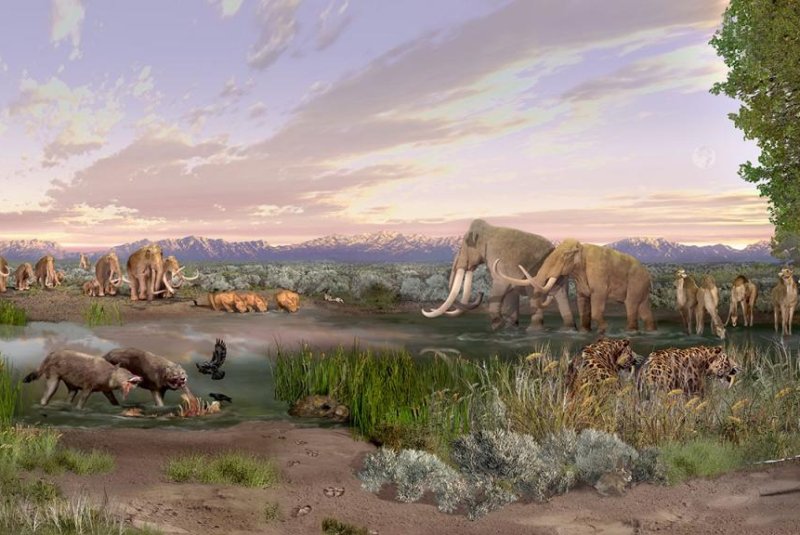Wherever early humans migrated, size-selection extinction patterns emerged. Photo by UNM
April 20 (UPI) -- Humans have been altering the course of mammalian evolution for thousands of years, according to new research.
Even before humans migrated out of Africa, early human populations had begun to influence animal size and diversity. The latest study, published this week in the journal Science, suggests size-selective extinction is not a natural product of evolution but a trademark of human activity.
"One of the most surprising finds was that 125,000 years ago, the average body size of mammals on Africa was already 50 percent smaller than on other continents," lead author Felisa Smith, a paleoecologist at the University of New Mexico, said in a news release. "We suspect this means that archaic humans and other hominins had already influenced mammal diversity and body size in the late-Pleistocene."
Researchers conducted a comprehensive survey of the fossil record, analyzing the remains of species living on all of the planet's continents over the last 65 million years. Their research showed no relation between size and extinction until the arrival of humans.
Humans shifted from a plant-based diet to one largely reliant on meat not long after they diverged from their ancestors. As their hunting skills developed, humans began targeting larger and larger prey. Big pieces of meat can sustain groups of humans for longer periods of time.
Until now, most researchers have focused on explaining the disappearance of megafauna at the end of the last ice age. The latest study is one of the first to trace the impact of human activity on animal size and diversity to the Late Quaternary, roughly 1 million years ago.
As humans evolved, their preference large hunks of meat begin to shift the makeup of ecosystems wherever they went. As humans expanded into new parts of the world, the fossil record reveals a reduction in mammal size and diversity.
"Our study suggests that all of these mammal extinctions are part of a long-term trend," said co-author Rosemary Elliott Smith. "This was fascinating because it only occurred after the arrival of early humans."
Statistical analysis of these trends shows the patterns are unlike any other found across the 65-million-year history of mammalian evolution. Researchers found no link between ancient climate change and size selective extinction.
"We suspect that in the past, shifts in climate led to adaptation and movement of animals, not extinction," said Stanford researcher Jonathan Payne. "Of course, today ongoing climate change may result in extinction since most megafauna are limited in how far they can move."
When scientists extended shrinking trends into the future, their model predicted the largest mammal in 200 years will be the cow.















